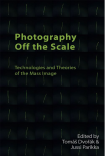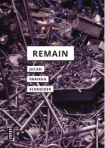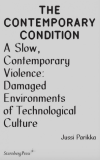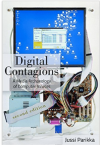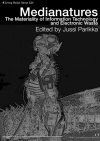Ernst on Time-Critical Media: A mini-interview
One of my interests of the recent times has been “microtemporality”. This interest has been spurred both by Wolfgang Ernst’s media archaeological theory and publications such as Axel Volmar’s 2009 edited volume on time-critical media. Indeed, notions of microtemporality offer ways to understand the technical conditioning of social/cultural processes on a level that is irreducible to the phenomenological. With different emphases to those of Ernst’s I know that for instance Katherine Hayles is nowadays looking at algorithmic trading from the temporal perspective too and Mark Hansen is from a more Whitehead perspective investigating ubiquitous media environments and that what escapes conscious cognition. See also Shintaro Miyazaki on these topics through the concept of Algorhythmics in Computational Culture.
In the midst of my own research into different temporalities that media archaeology offers, as well as network times/politics, I wanted to conduct a mini-interview with Wolfgang Ernst. Hence, please find below Wolfgang Ernst, responding to my question “what is time-critical media and microtemporality?”
Wolfgang Ernst:
“Technological media have a distinct quality: They are in their medium-being only in operation (“under current”). This specificity makes them especially sensitive to micro-temporal intrusion, irritation and manipulation – much more than previous cultural techniques like alphabetic writing which became time-critical only when electrically coded into telegraphy.
It was Gotthold Ephraim Lessing who in his treatise on the comparative aesthetics of poetry and visual arts Laokoon in 1766 identified what the called the “pregnant moment” in the representation of action. In electronic television the exact synchronisation, thus timing, of signals becomes crucial for the human aisthesis of image perception indeed. With techno-mathematical computing where minimal temporal moments become critical for the success of the whole process of internal calculation and human-machine communication (“interrupt”), time-criticality becomes a new object of epistemological attention in the economy of knowledge. When culture is rather counted than narrated, time-criticality needs to be focussed by process-oriented (thus dynamic) media archaeology.
Time-criticality in its media-technological context does not refer to a philosophical or critique of contemporary politics or ethics but rather to a special class of events where exact timing and the temporal momentum is “decisive” for the processes to take place and succeed at all. In its ancient Greek sense, crisis refers to the chances of decision, with its temporal form being an impulse rather than a duration or narrative – kairotic time. Kairos – the ancient Greek god of the decisive moment – becomes proverbial in post-modern just-in-time production in both industry and technologies, as well as in deadly situations like antiaircraft prediction in Second World War.
In its etymological roots, “time” itself refers to divisions of continuity, to the cutting edge. Apart from its long aesthetic tradition, the cultural impact of time-criticality escalates with (and within) technological media, starting from photographic exposure time which almost shrank towards zero. Signals which are operated with electronic speed can hardly be followed by human consciousness like, for example, symbols (printed letters) in textual reading. When signal transfer happens below human sensation, it can be spotted only by time-critical observation. For subliminal events the true archaeologist of time-critical knowledge are technical media themselves; only with the emergence of hightly sensitive measuring instruments since the 19th century time-critical processes like the runtime of signals within human nerves became analyzable at all.”


